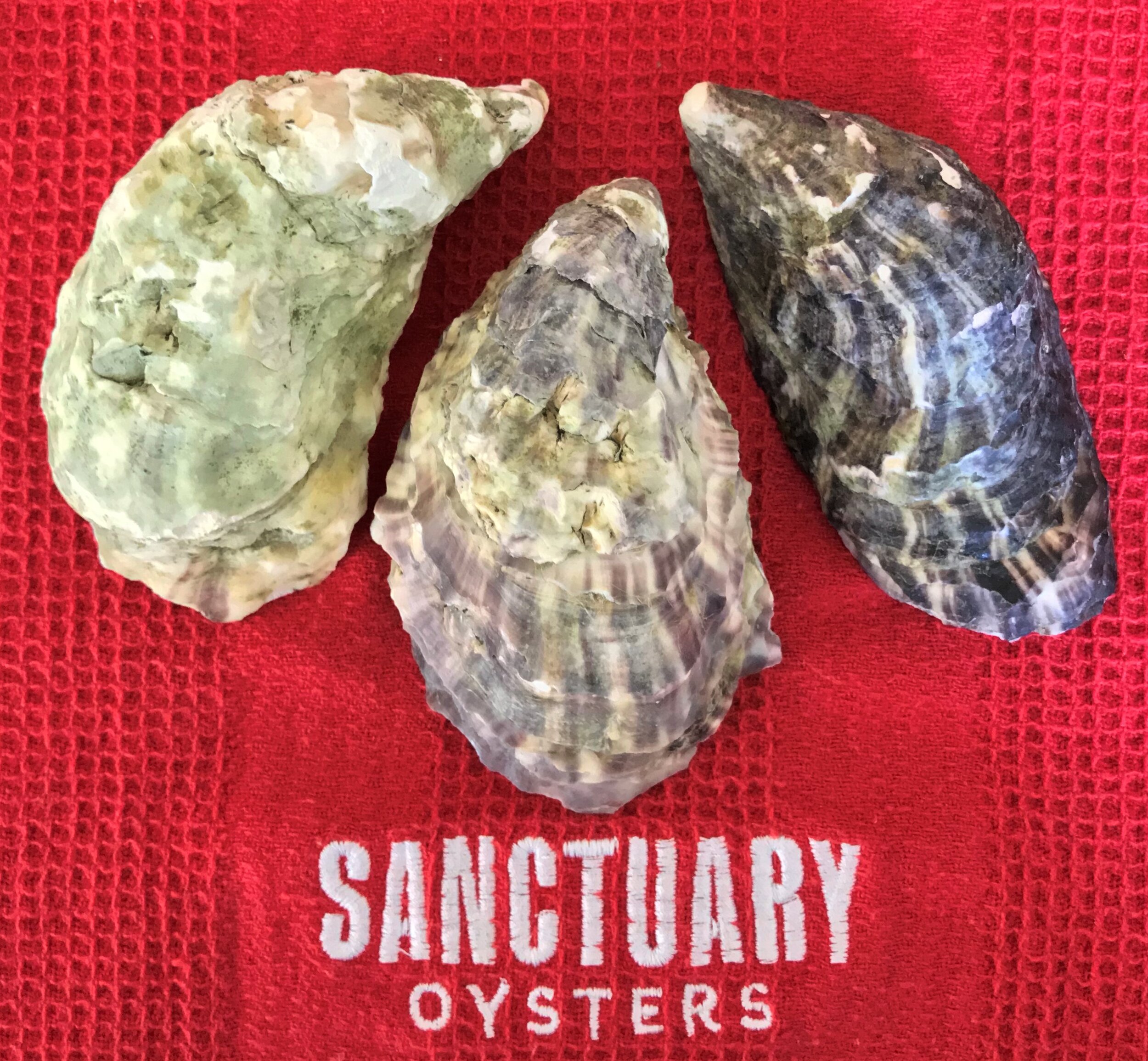Oyster Shells & What They Can Tell You
It’s a tale as old as time, tree rings tell a story. The rings can tell you how old a tree is, what the weather was like and what seasons the tree grew in. While trees may be interesting, we’re not tree experts. Wildly however, oysters are the same! The shell of an oyster also grows rings. The main difference is while tree rings represent years, oysters represent months. Different attributes of an oyster’s shell can tell you a lot about them. The experts at Sanctuary Oysters understand the complexity of these magnificent creatures and are ready to share the oysters’ stories.
An oysters’ shape is determined by the growing method. Not only that, but the growing method also impacts the flavor profile, texture and shell characteristics. There are four common growing methods.
- Beach or bottom cultured grow in tidal beaches with sandy or rocky bottoms. They are raised fighting waves, clamping tightly during low tides and having to protect themselves from predators. This results in oysters with thick shells and a hearty meat.
- Suspended tray or suspended lantern cultured oysters grow in mesh cages or bags one to two feet above the ocean floor. Here they are protected from predators and have ample space to grow. They are protected from predators, mud sand and silt. This lifestyle can result in shells with a more brittle texture to their exterior.
- Longline cultured oysters are attached to a rope suspended one to two feet above the ocean floor in intertidal regions. This lifestyle lends to oysters with a sturdier shell and firmer meat compared to suspended tray cultured oysters as a result of their interaction with the environment.
- Rack and bag cultured, or off-bottom technique develop the richest oysters with beautiful shells and deep cups. Here at Sanctuary Oysters, our oysters grow in a similar variation of this off-bottom The oysters are raised in bags on racks live in waters protected from predators, mud, dirt, sand and silt similarly to suspended tray oysters. They often grow larger because they are only filtering water for nutrients and do not have to sift through tough materials. They only filter cold, nutrient rich water full of algae and phytoplankton producing oysters with a clean, sweet and light flavor profile in their tender meats. The above-seabed growing also helps to cleanse the oysters.
The color of the oyster shell is influenced by genetics and the environment. It is common for oysters’ shells to be dark gray in color. Cornish Native oysters are blue and Pacific Oysters contain hints of purple, brown, or white. Environmental factors that change the color of oysters include variations in diet, temperature and mineral deposits in the water.
The makeup of an oyster shell is over 90% calcium carbonate. Other organic compounds like melanin, and trace amounts of iron and manganese also make up a shell's composition. Just like us, the melanin in their shells reacts similar to human skin when exposed to the sun: it burns. Some oysters have black stripes or are almost black due to prolonged sun exposure.
Recycling shells allows new oysters to tell their story and help the environment. Shells that are returned to the ocean become the home for juvenile oysters to grow. Oyster reefs provide habitat for fish, shrimp, crabs, birds, and other animals. They are also helping to limit erosion and are natural breakwaters that protect shorelines.
Looking to learn even more about our Sanctuary Oysters? Shoot us an email please at info@solazul.com.mx.

